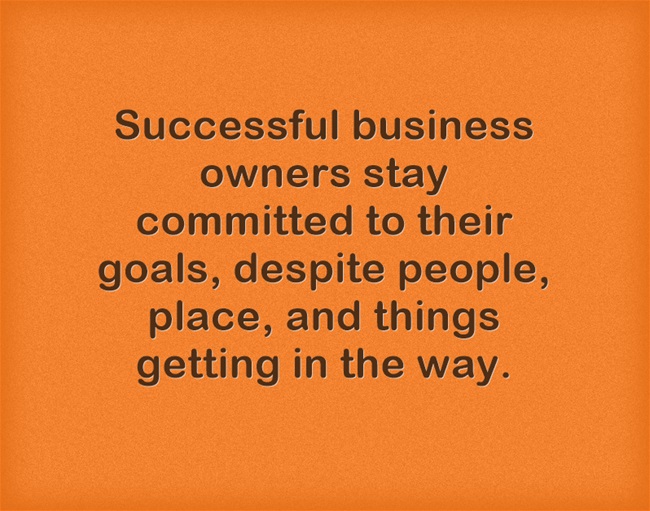You know the old saying, “If all you have is a hammer then everything looks like a nail.” It reminds us that we need several tools in our “successful business toolbox” to get the job done right. We know that resilience is one of the most essential tools a business owner needs if he wants long term business success. Unfortunately, most owners – and people in general – are not naturally resilient. It is not a character trait or mindset that we are commonly born with. Fortunately, you are not stuck with whatever amount of resilience you currently have. Just like your body, there are many ways to train your mind to get in shape.
Here are three places to start your training and work towards having a successful business. If you focus on mastering these techniques, they may be all you ever need. Remember – just like anything worthwhile in life these skills may take a long time to develop. But, resilient people understand that.
Skill 1 – Doing your best today
This idea has been warped all out of proportion over the years. Let’s bring it back to the real world.
Many motivational quotes, speeches, and articles suggest that “best” means giving 100% + each day. These ideas ignore fundamental human nature, are impossible to do and set people up for failure. This failure mindset then creates frustration, anger and a lack of confidence, but no insight into how to grow or change. If you cannot see how to get out of the cycle, it keeps repeating.
You can have a less than 100% day and still perform well. When you are flexible and adaptable, you can always find opportunities each day to make some progress. Most times “good enough” is all you need to do, perfect is a sucker’s game, even successful businesses have slow days.
Skill 2 – Learning to separate the corn from the husk
Corn is multi-functional and tasty. The husk is mono-functional (tamales) and inedible.
It is a no-brainer when you peel the husk off of corn you throw it away. In successful businesses, the same rule applies – prioritize, prioritize, prioritize. They focus on getting the most out of the good and limiting the bad. But, a lot of business owners, for a variety of reasons, have a hard time figuring out what is essential and what is not.
Their managing styles – too much or too little control – are at the wrong ends of the “effective management scale” because they never learned how to prioritize. They do not know which parts of the financials are important, or how metrics can be used to increase productivity, or that an accountability framework can decrease employee problems, or what best practices are right for their product.
Skill 3 – Knowing the difference between cause and effect
Top performers use failure as a tool to move forward. They figure out the root cause(s) of a problem, rather than focusing on the effect(s) of the problem. You cannot fix a cause if all you do is pay attention to the effects. It usually just leads to more failure.
Here is an example of focusing on the effects only. Productivity was low in Tom’s machine shop (the effect). He bought an ERP system (not the cause) to fix what he thought was the problem. Productivity continued to decline, and he was out of a lot of money for the system. Here is an example of separating the effects from the root cause. Productivity was low in Tom’s machine shop (the effects). He determined the root cause of his problem was that his three supervisors were not managing the employees. He got training for himself and two supervisors while firing the third one. Productivity, employee satisfaction, and profits increased.
(Sidebar – tech and paperwork never fix a people problem.)

They understand that stuff always happens despite their best efforts, but do not let it derail them. Written on the top of their toolbox – do your best, get rid of the rest and keep moving on.
At Cogent Analytics, we never stop looking for ways to improve your business and neither should you. So, check out some of our other posts for helpful business information:



